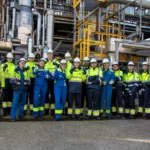In its White Paper, Cefic presents a roadmap to unleash the full potential of innovation in the chemical industry

As set out in Cefic’s Manifesto: Teaming Up for A Climate-Neutral and Competitive Europe, harnessing this potential will require making the innovation framework smarter. This involves fostering high-quality science, technological innovation, and collaborative policies that prioritise openness and pragmatic outcomes while embracing innovative approaches like regulatory sandboxing.
Innovation is pivotal in the chemical industry as it navigates the complex path of a double twin transition towards safer and more sustainable chemicals. With its capacity to deliver both sustainable and technologically advanced solutions while giving the industry a competitive edge, innovation has enormous potential.
Six pre-conditions must be in place to fully reap the benefits of a smart innovation policy framework
1. General recognition of the crucial role of chemicals to meet the EU Green Deal objectives
2. Cost competitive access to renewable and low carbon electricity
3. Stimulated market demand for new, safer, and more sustainable products
For example:
- Enforce recycled content targets recognising available recycling technologies such as chemical recycling, enforce biobased content targets and thereby support a market pull with incentives to drive the demand for more sustainable products.
- Create an EU Single Market for waste and end-of-life resources, including critical minerals/materials recycling.
4. Recognition of Environmental Benefits (including under EU Emissions Trading System (ETS))
Acknowledge the use of all decarbonised alternative solutions to fossil feedstocks such as recycled feedstocks, bio-based feedstocks, and CO2 as alternative carbon feedstock to produce chemicals and polymers in Europe.
5. Application of Technology Neutrality
Policy frameworks should prioritise targets while allowing the freedom to apply all necessary technologies to reach the given targets.
6. Access to skilled labour forces, including:
- Supporting efforts to keep and attract world-renowned university faculties.
- Simplifying and incentivising the migration of highly educated people toward the EU.
- Ensuring sufficient education facilities in digital technologies and Mathematics, Informatics, Natural Science, and Technology (MINT).
By addressing the prerequisites outlined in Cefic’s White Paper, the EU can ensure that innovation continues to be the driving force behind Europe’s double twin transition, securing not just environmental sustainability but also economic resilience and competitiveness on the global stage.










